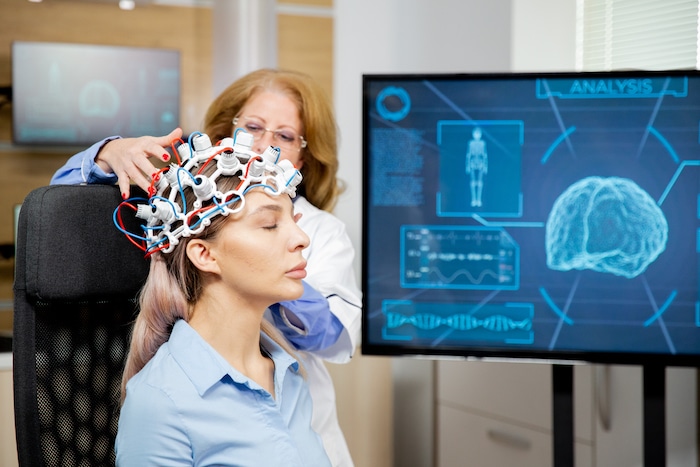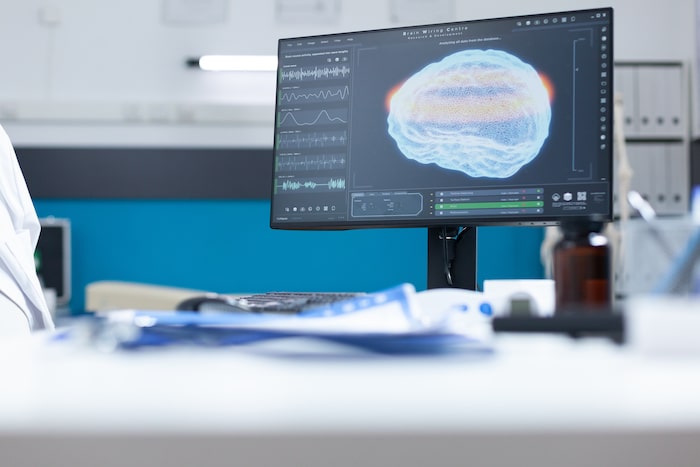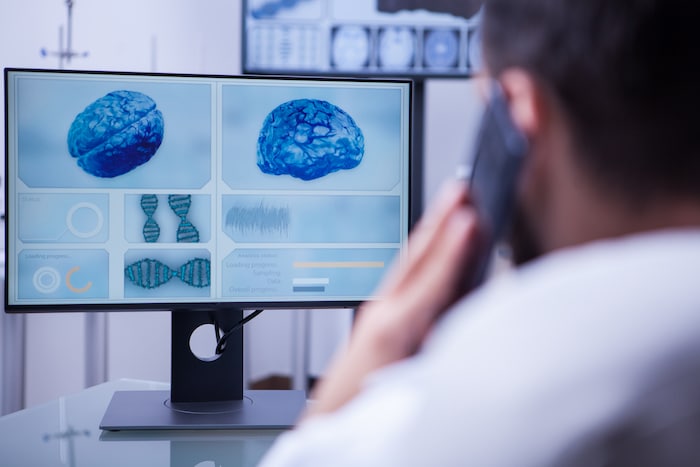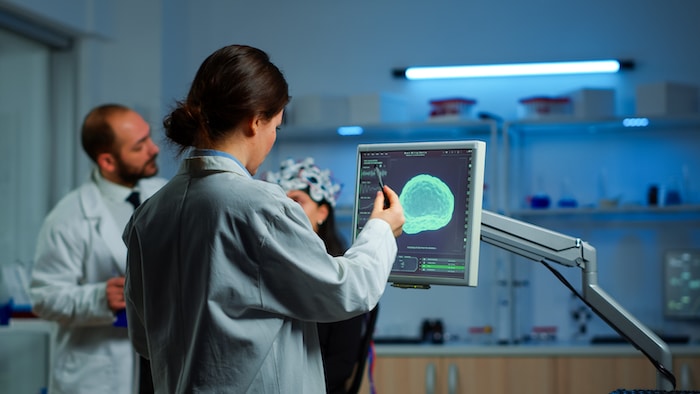4 min read
The Importance of Intraoperative Neurological Monitoring: Ensuring Patient Safety and Surgical Success
In the field of neurosurgery, ensuring patient safety and surgical success is of utmost importance. One crucial tool that aids in achieving these goals is intraoperative neurological monitoring. By closely monitoring the patient’s neurological functions throughout the surgical process, surgeons can promptly identify and address any potential complications or risks.
Intraoperative neurological monitoring involves the use of advanced technology and techniques to assess the integrity and functionality of the patient’s nervous system during surgery. This monitoring may involve techniques such as electromyography (EMG), somatosensory evoked potentials (SSEP), and motor evoked potentials (MEP). By continuously monitoring the patient’s neurological responses, surgeons can detect any changes or abnormalities and take immediate action to prevent irreversible nerve damage.
The importance of intraoperative neurological monitoring cannot be overstated. It not only allows surgeons to ensure patient safety but also enhances the overall surgical success rate. By monitoring the patient’s nervous system integrity, surgeons can make more informed decisions during the procedure, resulting in better surgical outcomes.
In conclusion, the significance of intraoperative neurological monitoring in neurosurgery cannot be emphasized enough. It serves as a vital tool in safeguarding patient well-being and maximizing surgical success.

1. The Role of Intraoperative Neurological Monitoring in Patient Safety
2. How Intraoperative Neurological Monitoring Improves Surgical Success Rates
3. How Intraoperative Neurological Monitoring Improves Surgical Success Rates
4. The Benefits of Real-Time Monitoring During Surgery
5. The Impact of Intraoperative Neurological Monitoring on Different Surgical Specialties
6. The Qualifications and Training Required for Intraoperative Neurological Monitoring Professionals
7.Challenges and Limitations of Intraoperative Neurological Monitoring
8.Emerging Technologies in Intraoperative Neurological Monitoring
9.Conclusion: The Future of Intraoperative Neurological Monitoring and Its Impact on Healthcare
The Role of Intraoperative Neurological Monitoring in Patient Safety
Patient safety is the top priority in any surgical procedure, and neurosurgery is no exception. Intraoperative neurological monitoring plays a vital role in ensuring patient safety by continuously assessing the patient’s neurological functions. This monitoring allows surgeons to identify any changes or abnormalities that may indicate potential complications or risks.
During neurosurgery, the patient’s nervous system is at risk of damage due to various factors such as surgical manipulation, retraction, or exposure to anesthesia. These factors can lead to nerve compression, ischemia, or direct injury. Intraoperative neurological monitoring provides real-time feedback on the patient’s neurological status, allowing surgeons to detect any signs of nerve damage early on. This early detection enables the surgical team to take immediate action, such as adjusting the surgical technique or repositioning the patient, to prevent further damage.
Intraoperative neurological monitoring is particularly crucial in surgeries that involve the spinal cord or delicate areas of the brain. The spinal cord is responsible for transmitting signals between the brain and the rest of the body, and any damage to this vital structure can result in permanent paralysis or loss of sensation. By monitoring the patient’s neurological functions during these surgeries, surgeons can ensure the integrity of the spinal cord and minimize the risk of complications.

How Intraoperative Neurological Monitoring Improves Surgical Success Rates
In addition to ensuring patient safety, intraoperative neurological monitoring also plays a significant role in improving surgical success rates. By continuously monitoring the patient’s neurological responses, surgeons can make more informed decisions during the procedure, resulting in better surgical outcomes.
Neurosurgery is a highly specialized field that requires precision and accuracy. Intraoperative neurological monitoring provides surgeons with valuable information about the patient’s nervous system integrity, enabling them to tailor their surgical approach accordingly. For example, if the monitoring reveals a decline in motor responses, the surgeon may adjust the technique to minimize the risk of motor deficits post-surgery.
Moreover, intraoperative neurological monitoring allows surgeons to assess the functional outcome of the surgery in real-time. By monitoring the patient’s neurological responses during the procedure, surgeons can evaluate the immediate impact of their actions. This feedback helps them make necessary adjustments or corrections, optimizing the surgical outcome.
Common Techniques Used in Intraoperative Neurological Monitoring
Intraoperative neurological monitoring involves a range of techniques and technologies to assess the patient’s nervous system integrity. These techniques provide valuable insights into the functionality of the nerves and help identify any abnormalities or changes that may require immediate intervention.
Electromyography (EMG) is a commonly used technique in intraoperative neurological monitoring. EMG measures the electrical activity of muscles and nerves, allowing surgeons to assess their functionality. During neurosurgery, EMG can help detect nerve compression or injury, enabling the surgical team to take immediate action.
Somatosensory evoked potentials (SSEP) are another essential technique used in intraoperative neurological monitoring. SSEP measures the transmission of sensory signals along the nervous system, providing information about the integrity of the sensory pathways. By monitoring SSEP, surgeons can assess the functionality of the sensory pathways and identify any potential risks or complications.
Motor evoked potentials (MEP) evaluate the functionality of the motor pathways during surgery. MEP involves the measurement of muscle responses to electrical stimulation, providing insights into the integrity of the motor pathways. This technique helps surgeons avoid potential motor deficits and ensure the preservation of motor functions post-surgery.
These are just a few examples of the techniques used in intraoperative neurological monitoring. Each technique has its specific applications and benefits, and the choice of technique depends on the nature of the surgery and the patient’s individual case.

The Benefits of Real-Time Monitoring During Surgery
Real-time monitoring during surgery provides numerous benefits to both the surgical team and the patient. By continuously monitoring the patient’s neurological functions, surgeons can promptly detect any changes or abnormalities, enabling them to take immediate action to prevent irreversible nerve damage.
Real-time monitoring allows the surgical team to make informed decisions during the procedure. By having access to real-time feedback on the patient’s neurological status, surgeons can adjust their surgical technique, reposition the patient, or even halt the procedure if necessary. This proactive approach minimizes the risk of complications and ensures the best possible outcome for the patient.
Moreover, real-time monitoring provides valuable data for post-operative evaluation. By comparing the pre-operative and intra-operative neurological responses, surgeons can assess the immediate impact of the surgery on the patient’s neurological functions. This feedback helps them make necessary adjustments or modifications to optimize the surgical outcome.
For the patient, real-time monitoring provides peace of mind, knowing that their neurological functions are continuously being assessed during the surgery. This monitoring enhances the overall patient experience and instills confidence in the surgical team’s ability to prioritize their safety and well-being.
The Impact of Intraoperative Neurological Monitoring on Different Surgical Specialties
Intraoperative neurological monitoring has a significant impact on various surgical specialties that involve the nervous system. From neurosurgery to orthopedic spine surgery, this monitoring plays a crucial role in ensuring patient safety and maximizing surgical success.
In neurosurgery, where the brain and spinal cord are the primary focus, intraoperative neurological monitoring is vital. The delicate nature of these structures requires continuous assessment to minimize the risk of complications and optimize surgical outcomes. Monitoring techniques such as SSEP, MEP, and EMG are commonly used in neurosurgery to evaluate the integrity and functionality of the nervous system.
Orthopedic spine surgery also benefits greatly from intraoperative neurological monitoring. Spinal surgeries often involve the manipulation of delicate spinal structures, which can pose risks to the nerves and spinal cord. By monitoring the patient’s neurological functions during these surgeries, surgeons can ensure the preservation of motor and sensory functions, minimizing the risk of post-operative complications.
Other surgical specialties, such as vascular surgery and otolaryngology, may also utilize intraoperative neurological monitoring techniques to safeguard patient safety and enhance surgical success. The choice of monitoring techniques may vary depending on the specific surgical procedure and the patient’s individual case.
The Qualifications and Training Required for Intraoperative Neurological Monitoring Professionals
Intraoperative neurological monitoring requires specialized skills and expertise. Professionals responsible for performing and interpreting the monitoring procedures undergo extensive training to ensure accurate and reliable results.
Intraoperative neurophysiological monitoring professionals, also known as intraoperative neuromonitoring (IONM) professionals, typically have a background in neurophysiology, neurology, or related fields. They receive specialized training in the techniques and technologies used in intraoperative neurological monitoring. This training includes theoretical knowledge, practical skills, and hands-on experience in real surgical settings.
IONM professionals work closely with the surgical team and play a vital role in monitoring the patient’s neurological responses during surgery. They are responsible for setting up and calibrating the monitoring equipment, performing the monitoring procedures, and interpreting the data in real-time. Their expertise and quick decision-making skills are essential in ensuring accurate monitoring and timely intervention if necessary.
To maintain the highest standards of patient care and safety, IONM professionals often pursue certifications or memberships with professional organizations such as the American Board of Neurophysiological Monitoring (ABNM) or the American Society of Neurophysiological Monitoring (ASNM). These certifications validate their knowledge and skills and demonstrate their commitment to ongoing professional development.
Challenges and Limitations of Intraoperative Neurological Monitoring
While intraoperative neurological monitoring is a valuable tool in neurosurgery, it does have certain challenges and limitations that need to be considered.
One of the challenges is the variability in patient responses. Each patient has a unique neurological profile, and their responses to the monitoring techniques may vary. Factors such as age, underlying medical conditions, and individual anatomy can influence the monitoring results. It is crucial for the surgical team to interpret the data in the context of the patient’s individual case to ensure accurate assessment.
Another challenge is the potential for false positives or false negatives. Intraoperative neurological monitoring provides valuable information, but it is not infallible. There can be instances where the monitoring indicates a potential issue that is not present or fails to detect a complication. Surgeons must carefully consider the monitoring results alongside other clinical findings to make informed decisions.
Furthermore, intraoperative neurological monitoring is not applicable to all surgical procedures. Some surgeries may not involve significant risks to the nervous system or may not require real-time monitoring. The decision to utilize intraoperative neurological monitoring should be made on a case-by-case basis, considering the potential benefits and risks.

Emerging Technologies in Intraoperative Neurological Monitoring
Advancements in technology continue to shape the field of intraoperative neurological monitoring, enhancing its capabilities and improving patient outcomes.
One emerging technology is the use of neuromodulation techniques during surgery. Neuromodulation involves the application of electrical or magnetic stimulation to specific nerves or areas of the brain. This technique can help preserve the functionality of the nervous system during surgery and minimize the risk of complications.
Another emerging technology is the integration of artificial intelligence (AI) and machine learning algorithms into intraoperative neurological monitoring. These algorithms can analyze large amounts of data in real-time, providing surgeons with valuable insights and predictive analytics. AI-powered monitoring systems can detect patterns and abnormalities that may not be apparent to the human eye, helping surgeons make more informed decisions during surgery.
Additionally, advancements in imaging technologies, such as intraoperative MRI and functional MRI, are improving the visualization of the nervous system during surgery. These imaging techniques provide real-time feedback on the patient’s anatomy and functionality, allowing surgeons to navigate complex structures with greater precision.
Conclusion: The Future of Intraoperative Neurological Monitoring and Its Impact on Healthcare
Intraoperative neurological monitoring plays a significant role in neurosurgery by ensuring patient safety and maximizing surgical success. By continuously monitoring the patient’s neurological functions during surgery, surgeons can detect any changes or abnormalities, enabling them to take immediate action to prevent irreversible nerve damage.
As technology continues to advance, the future of intraoperative neurological monitoring looks promising. Emerging technologies, such as neuromodulation techniques, AI-powered monitoring systems, and advanced imaging technologies, are revolutionizing the field. These advancements have the potential to further enhance patient safety, improve surgical outcomes, and shape the future of healthcare.
In conclusion, intraoperative neurological monitoring is a critical tool in neurosurgery. It provides valuable insights into the patient’s nervous system integrity, allowing surgeons to make informed decisions during the procedure. By ensuring patient safety and maximizing surgical success, intraoperative neurological monitoring continues to play a vital role in advancing the field of neurosurgery.
